Pattern for Wedding Dress
Deutsch
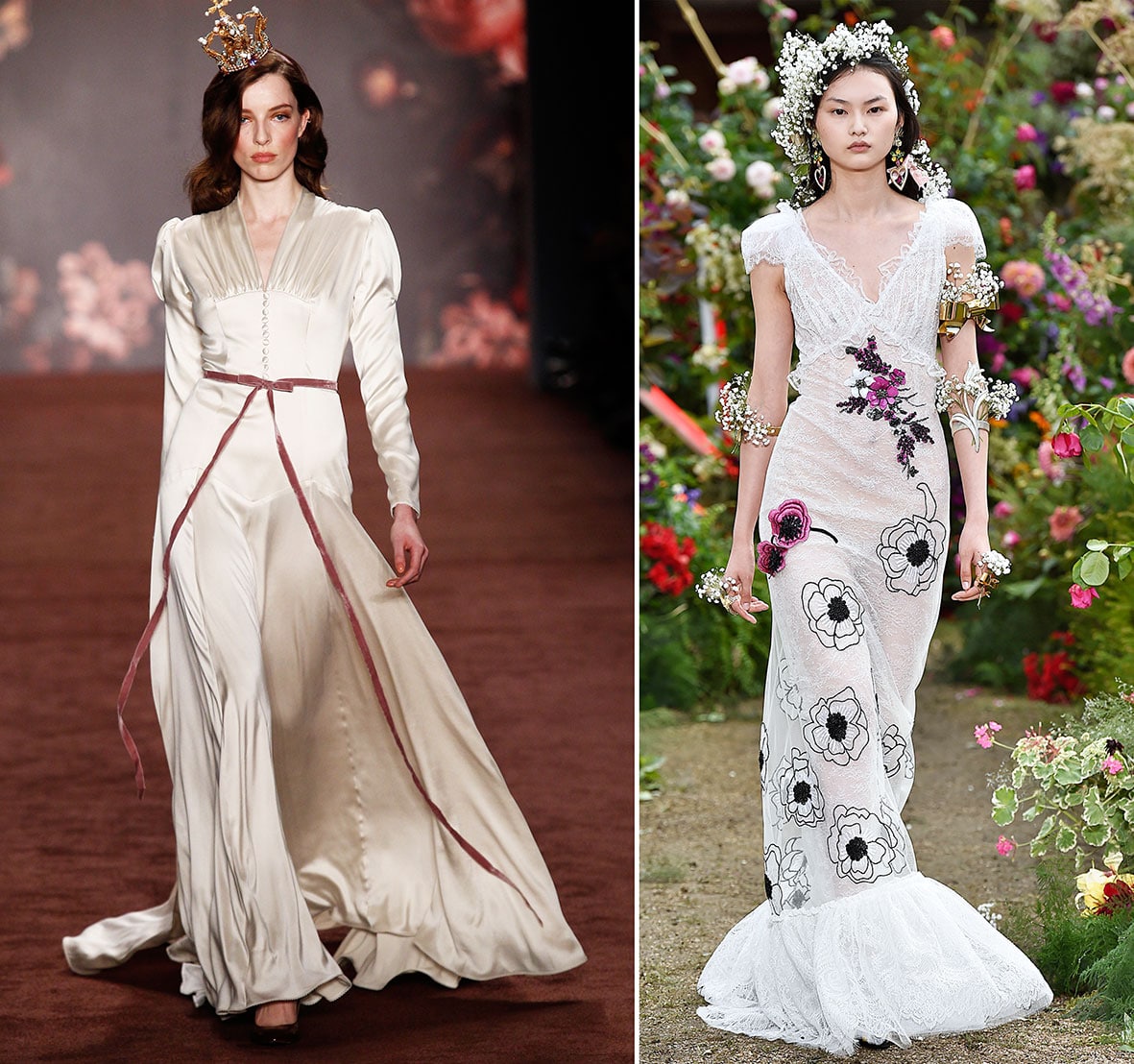
On this special day in life, the wedding day, everything must be perfect. Above all, the wedding dress should be chosen with care so that the bride is at the centre of her wedding and can enjoy the grand entrance. The wedding dress should be unique, fit the bride’s body shape and fit perfectly. So before choosing this important dress there are many questions about silhouette, cut, fabric and colour. There are countless variations of designs for bridal fashion. If you have a precise idea of your dream dress in mind and have high expectations, you can have a custom-made dress. Alternatively one can sew as a sewing professional the wedding dress naturally also. Who sews himself saves money, but should not underestimate however the temporal expenditure. For the large project wedding dress you will find many suggestions and pattern inspirations for bride, bridesmaids and wedding guests in this contribution.
Content
- The History of the Wedding Dress
- The Wedding Dress is changing
- The right Silhouette for every Bride
- Drafting Patterns for Wedding Dresses
- Sewing Pattern for a Wedding Dress in A-line
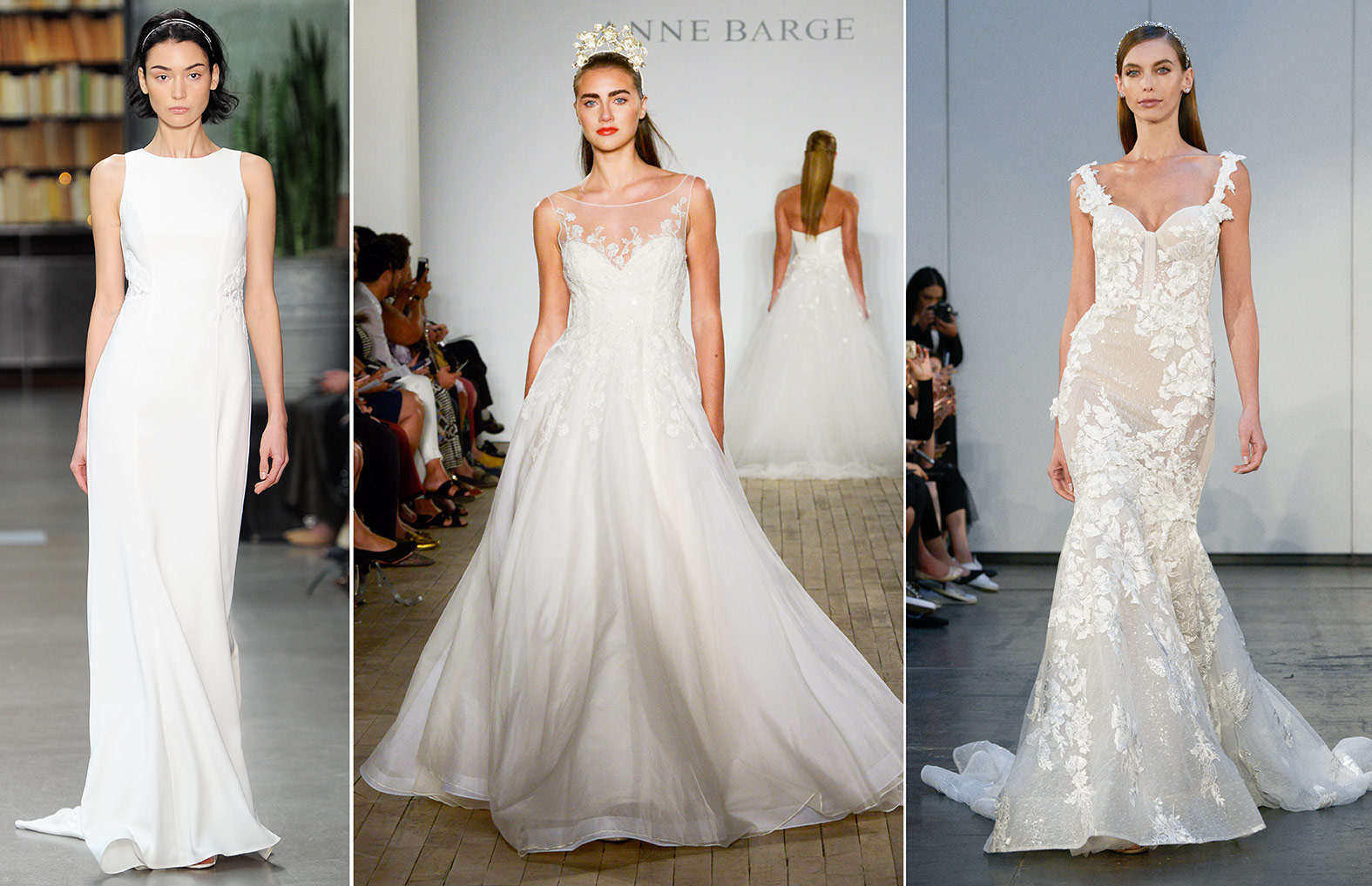
The History of the Wedding Dress
“Something old, something new, something borrowed, something blue and a lucky six-pence in your shoe” an English bride should wear on her wedding day. Something “old” from her previous life, something “new” for the new happiness in marriage, something “borrowed” to remember her family, something “blue” as a symbol of loyalty and the silver coin in the shoe that the couple should never run out of money.
This saying from Victorian England has been known worldwide since the marriage of the English heir to the throne Prince Charles to Lady Diana Spencer, who followed more than a billion people on screen or radio. “New” was the silk of Lady Di’s dress, old the lace, which came from the wedding dress of Queen Mary, the great-grandmother of her future husband. An embroidered blue forget-me-not adorned the waistband and a loan from her mother was the diamond earrings. Whether Diana’s shoe was a coin is not known. However, “for luck” a tiny golden horseshoe was hidden in the sweeping skirts of her wedding dress.
The white dream
Royal and princely houses have always influenced bridal fashion. One of the richest heiresses of her time, the Florentine Maria de Medici, was the first bride to wear an eggshell-coloured dress in 1600. In 1613 the English princess Elisabeth Stuart chose a gleaming white and silver brocade dress and when some weddings of the European aristocracy took place in the 19th century, when the brides were dressed in white, the wedding fashion changed. In 1840 the English Queen Victoria, only 21 years old, married her German cousin Albert von Sachsen Coburg and Gotha in a white silk dress with precious lace and a short bridal veil. The marriage was arranged, as usual at that time, by the family, but the bride had already fallen in love with her future husband at the age of 17. In 1853 the French Emperor Napoleon III married the educated Spanish Countess Eugénie de Montijo, who wore a white velvet dress at the ceremony, out of love. Empress Eugénie’s beauty and elegance inspired generations of jewellers and fashion designers, including the Englishman Charles Frederick Worth, who worked in Paris. The Austrian Empress Elisabeth wears one of his creations on the famous portrait of Franz Xaver Winterthaler from the year 1865. When she was only sixteen years old, she had given the Austrian Emperor Franz Josef the affirmation in a “Dream of White” in front of 70 bishops and prelates in the Augustinian Church in Vienna in 1854.
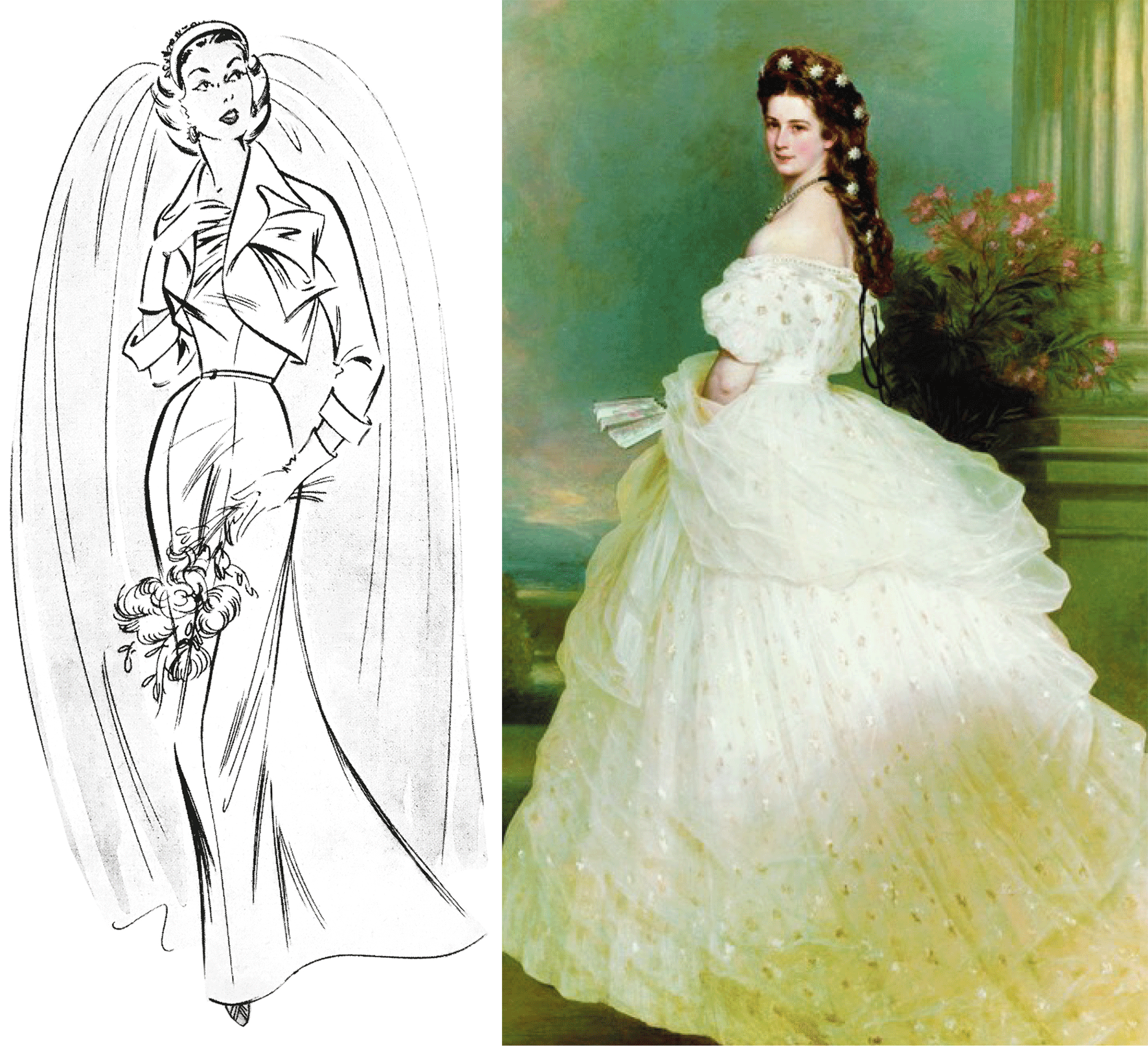
But neither bourgeois women nor women from the lower classes could afford their own wedding dress until the 20th century. They were married in the “Sunday State”, the dress with which they went to church and which was mostly made of black cloth. Even the brides of the upper middle classes and the lower nobility only stepped before the altar in their “finest” dress. Only after the First World War did the white wedding dress assert itself in all strata of the population, and that at a time when women were emancipating themselves, began to attend universities, entered the work process and fought for the right to vote. For some, marriage is of religious significance, for some it may be the desire to be a radiant centre of life. But not many people know that the “white”, according to an old tradition, symbolizes the virginity of the bride before marriage, that the veil is a sign of chastity and that the length of the train used to indicate the social status of the bride.
Frequently copied
The great designers are ripping for orders for wedding dresses for prominent women, because advertising in the media is priceless. But as soon as the first pictures of the happily married couple have appeared, their outfits are already being copied in countless workshops worldwide. The respective hype usually only lasts until the next prominent bride decorates the front pages. Some fashion designers also draw their inspiration from the media. The ivory wedding dress by Alexander McQueen, designed by Sarah Burton and worn by Catharine Middelton for Prince William’s wedding in 2011, resembled that of Gracia Patricia in 1965 for her wedding to Prince Rainier III of Monaco. The dress designed by Sarah Burton for Kate’s “Maid of Honour”, her sister Philippa Charlotte, called “Pippa, which caused a scandal, was also copied millions of times. Thus she wore white, the colour reserved for the bride and the fi gurbetonte cut of the dress and her graceful walk earned her the doubtful fame of the “most beautiful back” of England.
The Wedding Dress is changing
The bride changes and with her the silhouette. Love will never go out of fashion. However, it is different with weddings in Germany. In the past decades, a social change can be observed in Germany: While the wedding ceremony in the registry office, followed by a church ceremony was still common in the 50s, the following years showed a strong downtrend, which reached its lowest point in the 2000s. At this time, the Federal Statistical Office noted that the number of marriages decreased by 50 percent in recent decades.
The low point of love? Not at all, because the exchange of rings in the house of God was simply no longer necessary for many couples. Men and women don’t have to carry the same surname, to start a family. However, the civil ceremony celebrates its comeback. In 2017, 407,466 couples officially got married in Germany. While 21 percent of the couples left it at a civil marriage, the majority, decided that a signature just for the sake of tradition wasn’t romantic enough. Couples are making a personal statement by celebrating this special day with family and friends, while the church is no longer necessary. As many couples create a unique wedding day, they choose free ceremonies at the beach, lake, forest or meadow, surrounded by nature.
Why is this development important for fashion designers? Quite simply: One of the characteristics of a successful fashion brand is to perceive and respond to these social currents. Anyone who still creates the same bridal dresses as in the 1950s can hardly be successful. Due to the growing popularity of free ceremonies, the wedding dress is also changing: shoulders no longer need to be covered, necklines are getting bigger and the veil is often replaced by a flower arrangement. Just a few generations ago, the perfect age to get married was at the tender 20s. Nowadays, the bride is on average 31 years old and would like to be a princess once in her life. For this dream to come true she willing to invest nearly 1,300 euros, by relying on the expertise of the consulting. Most of the time she has an idea of the dress, a long time before the bridal outfitters visit, often influenced by social networks, celebrities and leading trends.
The right silhouette for every bride
So the challenge for bridal designers and outfitters is to make sure that the bride doesn’t shake her head at the sight of her wedding dress and gets annoyed by it, even in 30 years. As with all garments, the bridal gown begins with a matching silhouette. Because if the basic shape does not fit, tulle, lace and sequins can’t save the robe.
Overview of bridal gown silhouettes
A-Line

Many brides fall for the classic A-line. A-line wedding dresses are fitted to the waist and then flow naturally to the floor. This silhouette perfectly conceals problem areas such as hips, buttocks and thighs. A large bust can be stabilized by wide straps, strong arms can be covered by sleeves, if requested. This silhouette is changeable and varied, which is why it pleases most brides. In the case of many tulle layers, a short train should be bustled, if necessary. An over bustle, where the train is lifted and hooked over the top of the dress itself, can appear to magnify, so the backside of the bride could seem bulky, through the many layers of tulle. The French bustle, in which the train is tucked underneath and pinned to the fabric, is recommended for dresses with a soft skirt that flares gently from the hips. A midi- length is a good option for slim figures and petite brides who don’t want to be overpowered by their gowns. The hemline above the ankle gives the perfect illusion of height. Besides, the timeless cut is given a modern touch.
Princesses line/ Ball gown

She wants the wow-effect! If the bride is talking about a Sissi- dress and wants a fairytale wedding, then she probably dreams of the princess line. This silhouette is similar to the A-line and emphasizes the upper body, often by a corsage with a sweetheart neckline, accompanied by a wide, full skirt, often achieved by using hoop skirts or layers of tulle. This gives the silhouette its pompous look, but can also lead to complications on the day of the celebration: The bride is simply not as motion-free as she might wish. Therefore she should test the dress in all movements: sitting, arms up and even the hip swing to avoid frustration at the party. First and foremost, she needs to feel comfortable.
H-Line

When brides are planning a boho or vintage wedding, they often prefer an H- line wedding dress. This silhouette is suitable for petite women with slim figures. Delicate curves are often devoured by an A-line, while the H-line emphasizes the benefits of an androgynous type with a small bust perfectly. The choice of material usually falls on slightly shimmering taffeta or simply cotton. These fabrics fall straight and body-emphasized, but still, offer enough movement. In general, wedding dresses in H-line tend to be rather plain, as tulle and embellishments often overload the look. This silhouette is very well suited for women who fit a sporty or reserved type. Designers can break the simplicity of the dress through a high leg slit to bring a little sophistication to the gown.
Mermaid Line

The mermaid is known for being one of the most flirtatious wedding dress silhouettes. It’s perfect for brides who love to show their curves. The extravagant line is reminiscent of the contours of a mermaid. It’s extremely fitted throughout the bodice, waist, and hips and flares out in a ‘mermaids tail’ below the knees. The hem is often extended backwards with a train, for even more drama. For more freedom of movement, a dress with a removable train is recommended. The silhouette emphasizes every part of the body and therefore it’s perfect for women with a harmonious hourglass silhouette: a narrow waist, shapely buttocks and slim thighs. Otherwise, the wedding dress could quickly look unfavorable. The bride should also bring a certain height. Petite women are easy compressed by this silhouette.
Trumpet/ Fit and flare

Often confused with a mermaid silhouette, a trumpet silhouette has a straight-lined bodice that nicely flares above the knees. As a result, the hips and buttocks remain emphasized, while problem areas, such as thighs can still be concealed. The trumpet is also suitable for tall women with a slim figure. Designers often extend this silhouette with a court train that falls close to the back of the dress. With a length of approximately 60 centimeters, it is a medium in length train. It reflects the female physique in its round shape and gives the look a final touch. Ideally, this train can also be pinned up in a bustle.
Empire Line
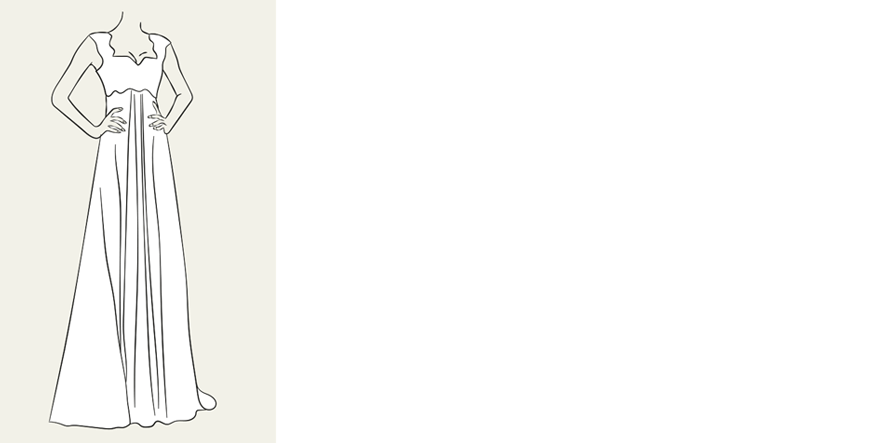
While this silhouette goes back to ancient Rome, the term arose in the early 20th-century. The empire line was very fashionable all over Europe at the time of the Napoleonic Empire. This century-old cut celebrates a comeback, because many brides love the romantic feminine look. The Empire line directs the full attention to the cleavage. The significantly higher waist wanders below the chest, where it is emphasized with a cross seam. Modern accents can be set by asymmetrical cutouts. The skirt falls in light fabrics and looks almost inconspicuous. This simplicity perfectly conceals problem areas. Therefore, it’s also the choice of many pregnant women, because it’s not possible to estimate the size of the belly on the day of the wedding. In addition, a pregnant woman can wear support trousers underneath without getting noticed. Anyone who chooses a wedding dress in the Empire line, should disclaim a long veil. A large amount of material can seem overloaded, quickly. Matching hair accessories in the form of a flower wreath or individual beads are emphasizing this look.
Color and material
The choice of fabric is essential for the pattern to show off optimally. Many fashion designers use silk fabrics. The soft natural material is hypoallergenic, has high elasticity, cools in the heat and warms in the cold. If lace is used, it should be placed on high-quality material, otherwise, it may irritate the skin and cause an itching sensation. Satin is a heavy fabric that flatters seamlessly around the silhouette of the bride. Satin doesn’t wrinkle, feels soft and gives the bridal gown a beautiful shine. Organza, on the other hand, is transparent, thin and light, while it has an optimal tenacity. This material has a shimmering appearance and gives the bridal gown volume, such as tulle. Tulle is a stiff, transparent fabric that gives the dress more volume without weighing it down. However, chiffon is a transparent and delicate material, which is finer. It is often used in multiple layers as the outer fabric. To find the right shade of the substance, it is advisable to match the substances to the skin color, by daylight. After the cut and silhouette are determined, the bride should always wear the same brassiere and shoes during fitting appointments.
Drafting patterns for wedding dresses
Pattern Making for Wedding Dresses
In this E-Dossier you will find instructions on how to construct the pattern for these three floor-length wedding dresses with a feminine silhouette and interesting details such as deep back necklines, extraordinary sleeves and high collar.
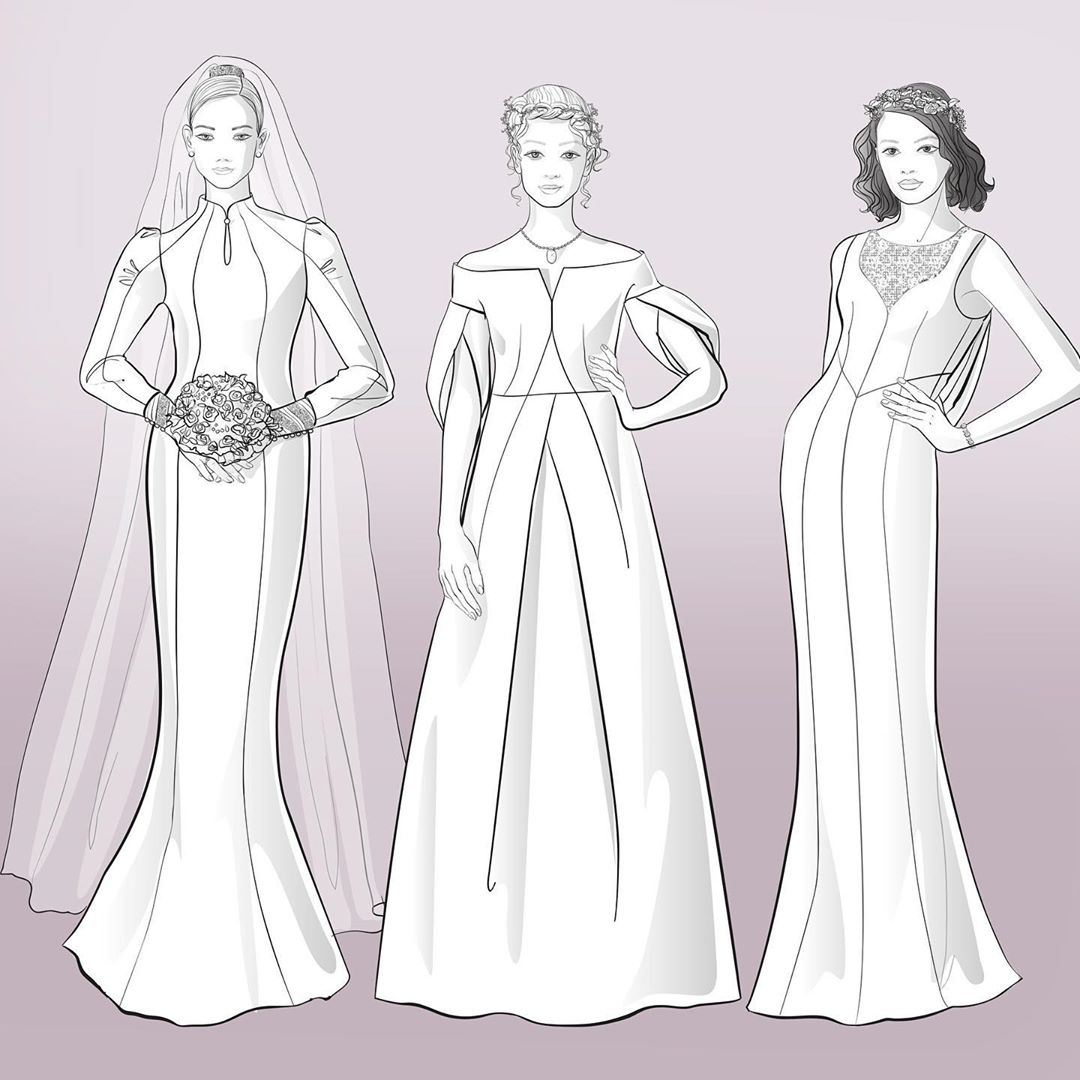
Sewing Pattern for a Wedding dress in A-line
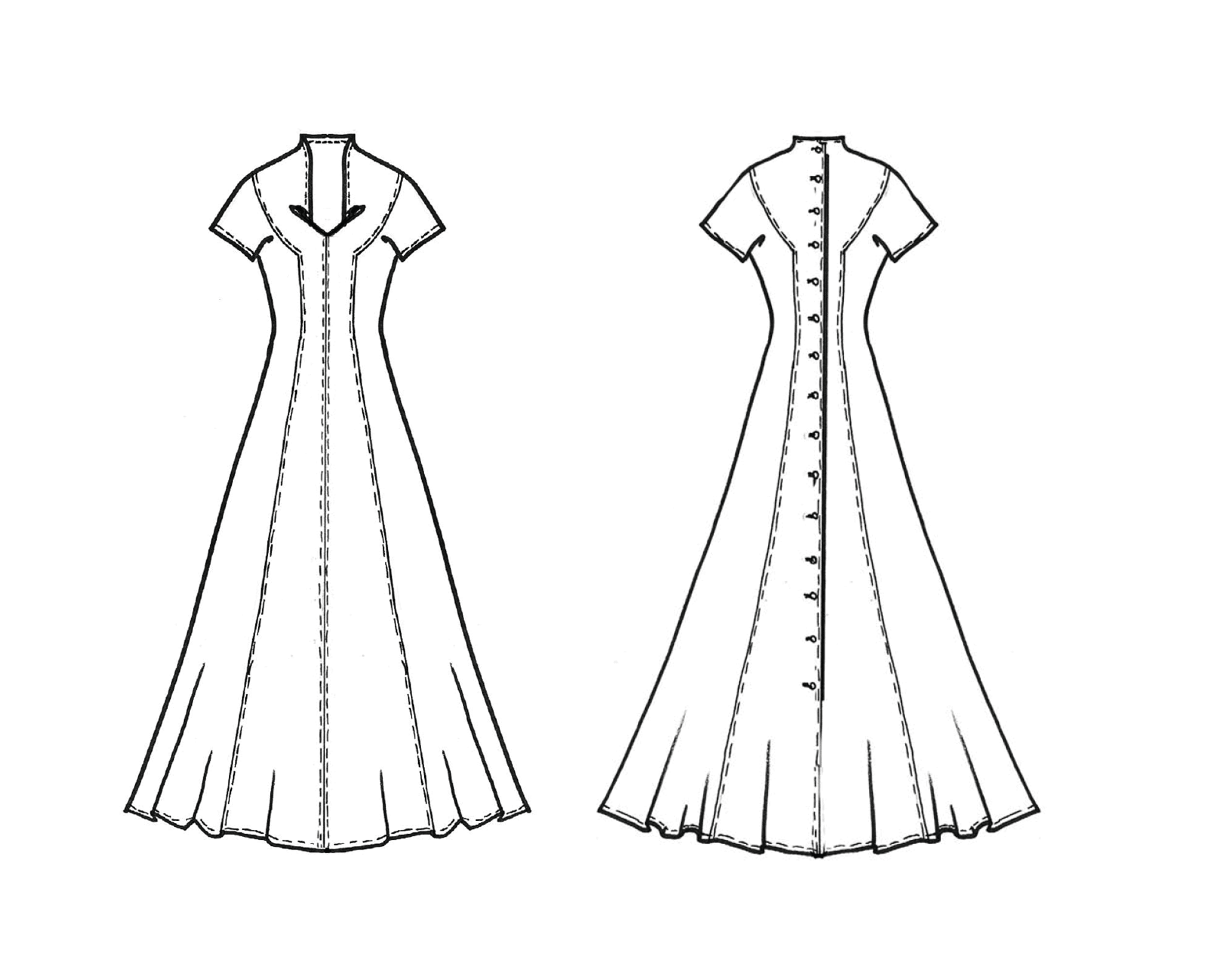
You can find many more pattern instructions and patterns for sewing dresses in our online shop.


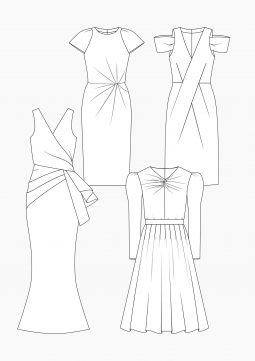
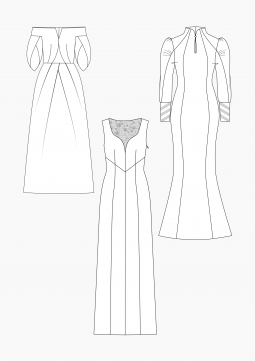
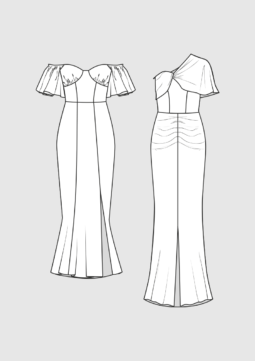
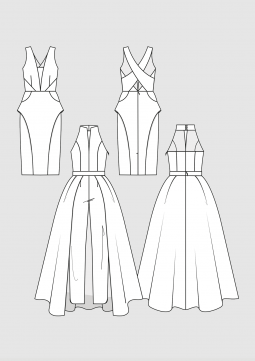
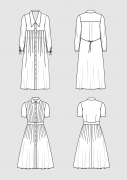
Hi Team Rundschau,
Is it allowed to teach patternmaking using the books of the Rundshau system ? As well in the studio, and online? We would love to use them for teaching, but are not sure it is allowed. Marijke Bongers, http://www.ecotextilestudio.nl
Dear Marijke Bongers, we sent you an e-mail.
Hi, for my sewing school I have the same question as Marijke Bongers :
Is it allowed to teach patternmaking using the books of the Rundshau system ? Greetings, Lina Celis
Dear Lina,
please take a look at your inbox, we sent you an e-mail with all the information.
Kind regards,
M. Müller & Sohn Team